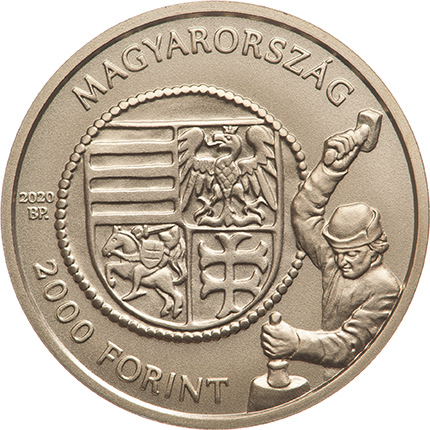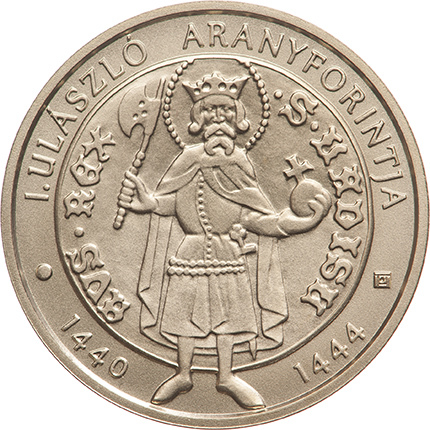Zusätzliche Informationen
| Titel / Anlass | |
|---|---|
| Land | |
| Nominal | |
| Prägejahr | |
| Material | |
| Feingehalt | |
| Durchmesser (mm) | |
| Gewicht | |
| Form | |
| Rand | |
| Prägequalität | |
| Münzstätte | |
| Prägezeichen | |
| Auflage | |
| Serie | |
| Designer |


| Titel / Anlass | |
|---|---|
| Land | |
| Nominal | |
| Prägejahr | |
| Material | |
| Feingehalt | |
| Durchmesser (mm) | |
| Gewicht | |
| Form | |
| Rand | |
| Prägequalität | |
| Münzstätte | |
| Prägezeichen | |
| Auflage | |
| Serie | |
| Designer |
A coat-of-arms split into four parts, shown on the golden coins of Vladislaus I, bordered by a string of pearls arranged in a slightly unorderly manner, typical of Medieval coins. The coat of arms, split into four parts, was typically featured on golden forints from Sigismund’s rule uniting the elements of family and Hungarian royal coats of arms (Hungarian splits and the double cross). To the right a representation of a typical coin minter of the 1400s, presenting an authentic minting technique. Inscriptions: the lettering ‘MAGYARORSZÁG’ at the top, in the lower left the denomination 2000 FORINT, mint year 2020 and the mint mark ‘BP.’
The golden florin of Vladislaus I is shown, with slightly enlarged Saint Ladislaus’s figure. At the top the lettering ‘I. ULÁSZLÓ ARANYFORINTJA’ (the golden florin of Vladislaus I), at the bottom the years 1440 and 1444 make a reference to the time of Vladislaus I’s reign. The upper and lower legends are separated by a circular, decorative motif on the left and the master mark of Zoltán Tóth on the right.